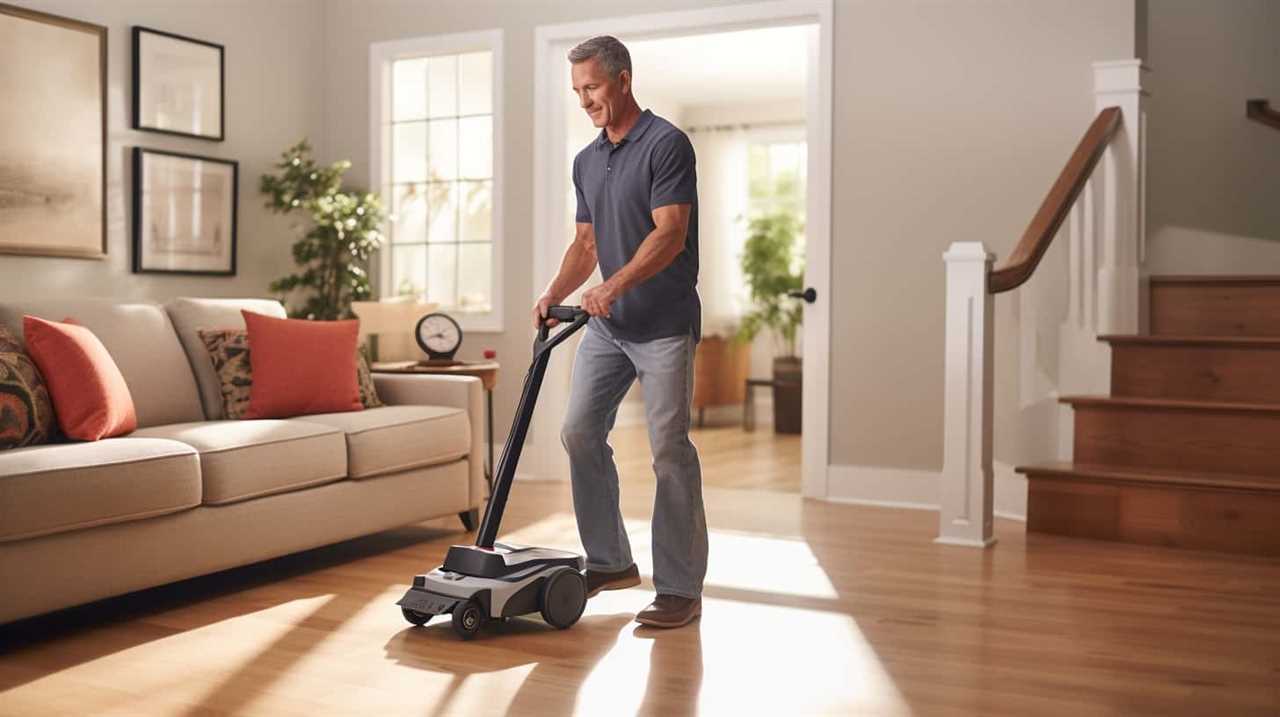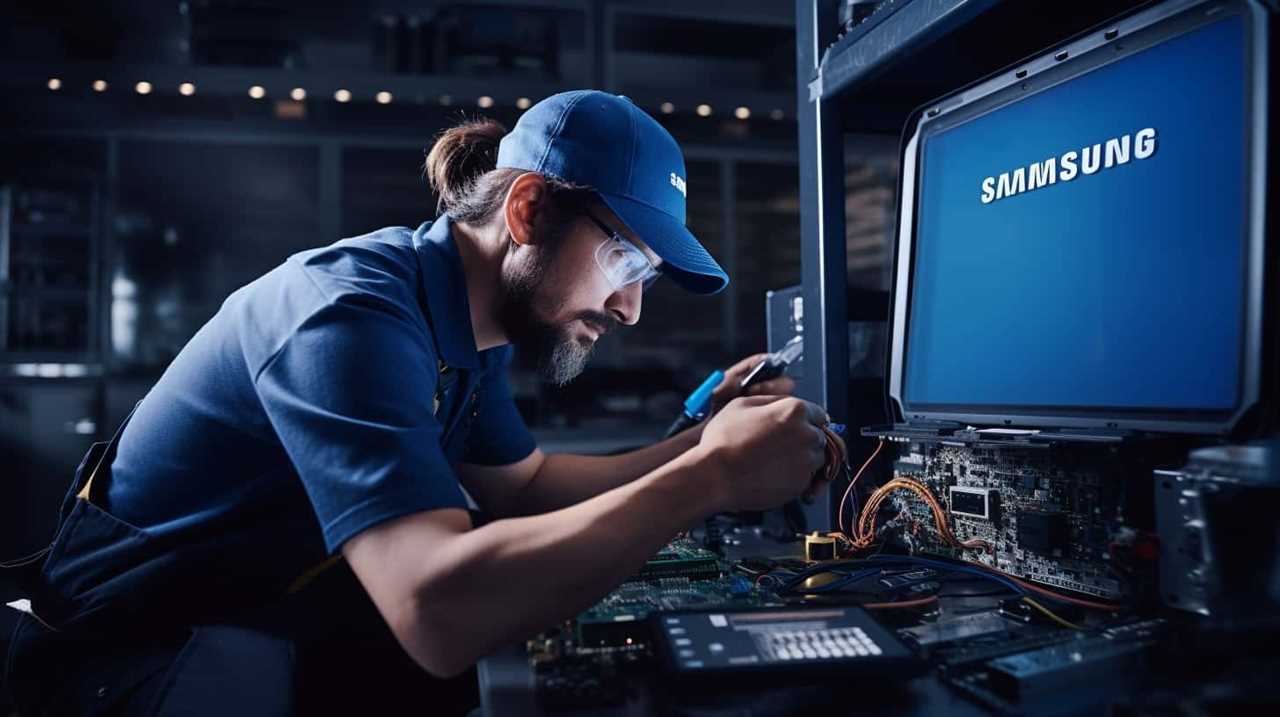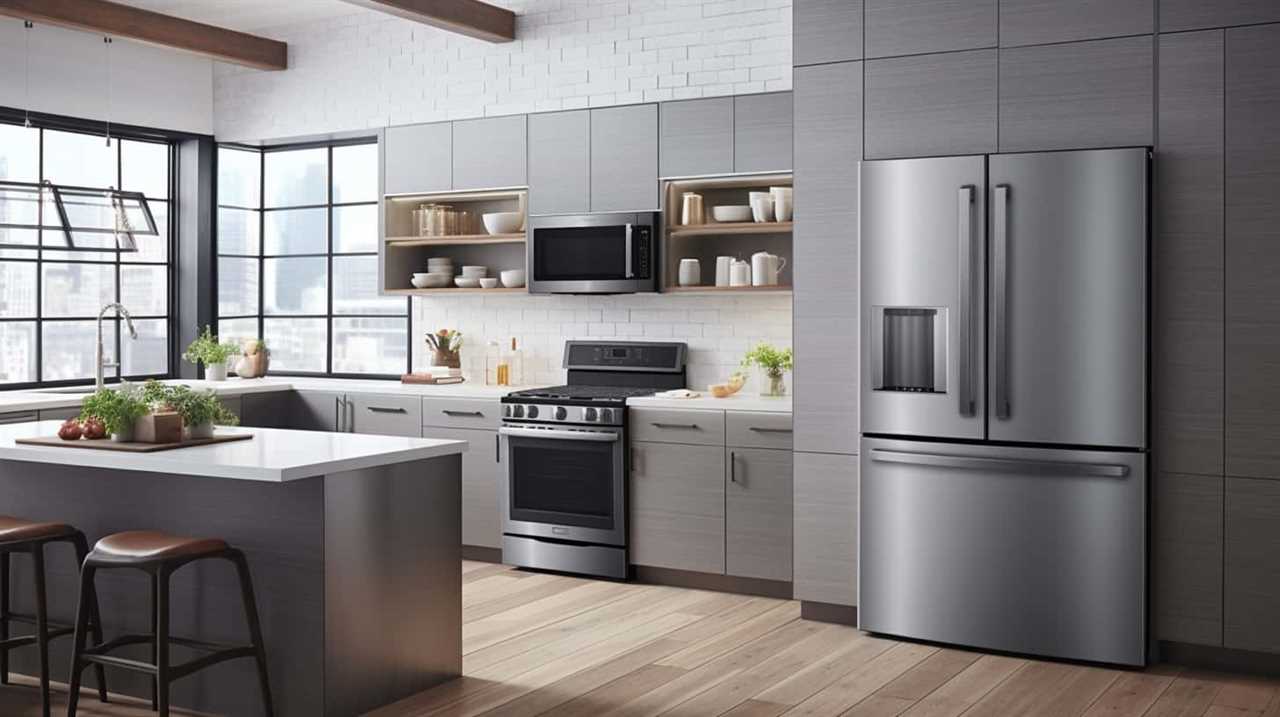We understand that disasters can happen suddenly, leaving us in a vulnerable state and in need of assistance. This is why we depend on life-saving devices to ensure our safety during emergencies.
In this article, we’ll explore the essential tools that can make all the difference between life and death. From fire extinguishers to emergency food supplies, we’ll examine the must-haves for any prepared individual.
So, sit back, take notes, and prepare for mastery in the art of survival.
Key Takeaways
- Fire extinguishers are essential tools for fire protection and there are five main types: water, foam, carbon dioxide, dry powder, and wet chemical.
- A well-stocked first aid kit is essential for emergencies and should include adhesive bandages, sterile gauze pads, antiseptic wipes, and tweezers.
- Smoke detectors play a crucial role in ensuring home safety and require proper installation, maintenance, and battery replacement.
- Carbon monoxide detectors provide early warning systems for the presence of this deadly gas and are required in many jurisdictions for residential and commercial buildings.
Fire Extinguisher
We believe that a fire extinguisher is an essential tool for protecting ourselves and our loved ones in the event of a fire. To effectively utilize a fire extinguisher, it’s crucial to receive proper fire safety training. This training equips individuals with the knowledge and skills to handle different types of fire extinguishers.

There are five main types of fire extinguishers, each designed to combat specific classes of fires. These types include water, foam, carbon dioxide, dry powder, and wet chemical extinguishers. Water extinguishers are suitable for fires involving solid materials such as wood or paper, while foam extinguishers are effective for both solids and flammable liquids. Carbon dioxide extinguishers are ideal for electrical fires, whereas dry powder extinguishers can tackle a range of fires including flammable gases. Lastly, wet chemical extinguishers are specifically designed for cooking oil and fat fires.
Understanding the different types of fire extinguishers and their appropriate usage is essential for effective fire prevention and control.
Now, let’s transition into the subsequent section about the importance of having a well-stocked first aid kit.
First Aid Kit
A well-stocked first aid kit is an indispensable tool for ensuring our safety and the well-being of those around us. When it comes to emergencies or accidents, having the right supplies at hand can make all the difference.

Here are five essential items that should be included in every first aid kit:
- Adhesive bandages: These are perfect for covering small cuts and wounds.
- Sterile gauze pads: These can be used to dress larger wounds and prevent infection.
- Antiseptic wipes: These wipes are crucial for cleaning wounds and preventing bacteria from causing further harm.
- Tweezers: Useful for removing splinters or foreign objects from the skin.
- CPR mask: This is essential for performing CPR and ensuring proper respiration during emergencies.
While having a first aid kit is important, it’s equally crucial to have the knowledge and training in first aid techniques. Knowing how to administer CPR, stop bleeding, or treat burns can greatly enhance the effectiveness of a first aid kit.
Transitioning into the subsequent section about ‘smoke detector’, it’s important to remember that being prepared for emergencies involves more than just having the right tools.
Smoke Detector
When it comes to ensuring the safety of our homes, smoke detectors play a crucial role. These devices are designed to detect smoke and alert us in case of a fire, giving us valuable time to evacuate and call for help.

Proper installation techniques are vital to ensure their effectiveness in detecting and alerting us to potential fires. This includes placing them in every bedroom and on each level of the house.
Regular maintenance and battery replacement are also important to keep smoke detectors in good working condition. This ensures that they will function properly when needed.
Importance of Smoke Detectors
Smoke detectors are essential life-saving devices that every home should have. They play a crucial role in ensuring the safety of your household by providing early detection of smoke or fire. Here are five reasons why smoke detectors are so important:
- Early Detection: Smoke detectors can detect smoke or fire at an early stage, giving you valuable time to evacuate and call for help.
- 24/7 Monitoring: Smoke detectors work round the clock, providing constant protection and peace of mind.
- Proper Maintenance: Regularly inspecting and testing your smoke detectors ensures they’re in proper working condition and ready to alert you in case of an emergency.
- Reduced Risk: By alerting you early, smoke detectors help minimize the risk of injuries, property damage, and even loss of life.
- Mandatory Requirement: Many jurisdictions require the installation of smoke detectors in residential buildings, making them a legal obligation.
Now that we understand the importance of smoke detectors, let’s explore the proper installation techniques to ensure their effectiveness.

Proper Installation Techniques
How can we effectively install smoke detectors to ensure their proper functioning?
Proper installation techniques are crucial for the safety and effectiveness of smoke detectors. To begin, choose the ideal location for installation. It’s recommended to install smoke detectors on the ceiling, as close to the center of the room as possible. Avoid placing them near doors, windows, or ventilation systems, as this may affect their performance.
Next, follow the manufacturer’s instructions carefully during installation. Make sure to use the provided mounting hardware and test the smoke detector after installation to ensure it’s functioning correctly.
Additionally, it’s essential to regularly clean and maintain smoke detectors to prevent dust and debris from obstructing their sensors.

Maintenance and Battery Replacement
To ensure the proper functioning of smoke detectors, we need to regularly maintain and replace their batteries. Smoke detectors rely on batteries to power their sensors and sound the alarm in case of a fire.
Here is a maintenance checklist to help you keep your smoke detector in optimal condition:
- Check the battery lifespan: Most smoke detector batteries last for about 6 to 12 months. Make sure to replace them before they expire.
- Test the smoke detector: Press the test button on your smoke detector to ensure it’s working correctly.
- Clean the smoke detector: Dust and debris can interfere with its performance. Gently vacuum the detector or use a soft brush to remove any dirt.
- Keep it free from obstructions: Make sure nothing is blocking the smoke detector’s sensors, as this can prevent it from detecting smoke.
- Replace the entire unit every 8 to 10 years: Over time, the sensors can become less sensitive. It’s recommended to replace the smoke detector entirely after this time period.
Regular maintenance and battery replacement will ensure that your smoke detector is always ready to protect your home and loved ones from potential fire hazards.
Carbon Monoxide Detector
Carbon monoxide detectors are essential for ensuring the safety of our homes. They play a crucial role in the detection of this odorless and colorless gas, which can be deadly when inhaled in high concentrations. By alerting us to the presence of carbon monoxide, these detectors help prevent potential health risks and allow us to take necessary actions to protect ourselves and our loved ones.

It’s important to install and maintain carbon monoxide detectors properly to ensure their effectiveness in keeping us safe.
Importance of Detection
We rely on a carbon monoxide detector to detect this odorless and colorless gas, protecting us from potential harm. Carbon monoxide is a deadly gas that can be produced by faulty appliances, such as gas stoves or furnaces, and can quickly build up in enclosed spaces.
The importance of having a carbon monoxide detector can’t be overstated. Here are some key reasons why detection is crucial:
- Early warning systems: Carbon monoxide detectors are designed to detect trace amounts of the gas in the air, providing an early warning sign of its presence.
- Life-saving technology: These detectors can sound an alarm when dangerous levels of carbon monoxide are detected, giving occupants the opportunity to evacuate and seek fresh air.
- Peace of mind: Knowing that a carbon monoxide detector is in place provides peace of mind, especially during the night or when leaving the house unattended.
- Compliance with safety regulations: Many jurisdictions require the installation of carbon monoxide detectors in residential and commercial buildings to ensure the safety of occupants.
- Preventing long-term health effects: Prolonged exposure to carbon monoxide can lead to serious health issues, such as organ damage or even death. A detector can help prevent these long-term effects by alerting residents to the presence of the gas.
Potential Health Risks
Our detector’s ability to warn us of potential health risks is crucial in ensuring the safety of ourselves and our loved ones. Carbon monoxide (CO) is a colorless and odorless gas that can be extremely harmful if inhaled. The potential side effects of CO poisoning include headache, dizziness, nausea, confusion, and even loss of consciousness. In severe cases, it can lead to death.

The long-term consequences of CO exposure can be devastating, as it can cause permanent damage to vital organs such as the brain and heart. That’s why having a carbon monoxide detector in our homes is essential. It continuously monitors the air for CO levels and alerts us if they reach dangerous levels.
This early warning system allows us to take immediate action, such as opening windows, leaving the premises, or calling emergency services, to prevent any harm to our health.
Installation and Maintenance
Ensuring the proper installation and regular maintenance of our carbon monoxide detector is essential for its effectiveness in detecting harmful levels of the gas. Here are some key techniques to follow for proper installation:
- Place the detector at least 5 feet above the floor, as carbon monoxide tends to rise.
- Install detectors near bedrooms and common areas, ensuring they’re easily accessible.
- Avoid placing detectors near sources of heat or humidity, as this may affect their performance.
- Test the detector regularly to ensure it’s in proper working condition.
- Replace the batteries at least once a year, or as recommended by the manufacturer.
Regular maintenance is equally important to keep your carbon monoxide detector functioning optimally. Here are some maintenance tips:

- Clean the detector regularly to remove dust or debris that may interfere with its sensors.
- Check the expiration date of the detector and replace it if it’s past its recommended lifespan.
- Familiarize yourself with the manufacturer’s instructions for maintenance and troubleshooting.
Emergency Escape Ladder
How can we quickly and safely escape from a building during an emergency situation? One of the most effective ways is by using an emergency escape ladder. These ladders are designed to provide a quick and reliable means of exiting a building when traditional exits are unavailable or unsafe. When choosing the right emergency ladder, there are several important factors to consider. Firstly, it is crucial to ensure that the ladder is long enough to reach the ground from the highest point of the building. Additionally, the ladder should be sturdy and able to support the weight of multiple individuals. Lastly, it is important to check for certifications and safety features, such as anti-slip rungs and fire-resistant materials. By carefully considering these factors, we can ensure that we have a reliable and safe means of escape during emergencies.
| Factors to Consider | |
|---|---|
| Length | Long enough to reach the ground |
| Durability | Sturdy and can support weight |
| Safety Features | Anti-slip rungs, fire-resistant |
| Certifications | Verified safety standards |
Automated External Defibrillator (Aed)
One of the most crucial life-saving appliances is an automated external defibrillator (AED), which can be a game-changer in emergency situations. AEDs are portable devices that deliver an electric shock to the heart, restoring its normal rhythm in cases of sudden cardiac arrest.
To fully utilize the potential of AEDs, it’s essential to receive proper training. AED training equips individuals with the knowledge and skills needed to confidently and effectively use the device.
Additionally, strategic placement of AEDs in public spaces is of utmost importance. High-traffic areas such as shopping malls, airports, sports arenas, and schools should be equipped with AEDs to ensure quick access during emergencies.

By promoting AED training and increasing their availability in public spaces, we can significantly improve the chances of survival for those experiencing cardiac arrest.
This brings us to the next life-saving appliance, the emergency flashlight.
Emergency Flashlight
When it comes to an emergency flashlight, brightness, durability, and longevity are key factors to consider.
The brightness of the flashlight is crucial in illuminating dark areas during emergencies, ensuring visibility and safety.

Additionally, durability is essential to withstand rough handling and harsh conditions, allowing the flashlight to function reliably when needed the most.
Lastly, a long battery life or extended power source is vital for prolonged use, ensuring that the flashlight remains operational throughout the duration of the emergency.
Importance of Brightness
We believe that a bright emergency flashlight is a crucial life-saving appliance. In emergency situations, having a flashlight with high brightness is essential for several reasons:
- Improved visibility: A bright flashlight ensures that emergency areas are well lit, allowing for better visibility and reducing the risk of accidents or injuries.
- Efficient search and rescue: A powerful beam of light helps search and rescue teams locate individuals in distress more quickly and effectively.
- Signaling for help: A bright flashlight can be used to signal for help in emergency situations, increasing the chances of being noticed by rescue teams or passing vehicles.
- Psychological comfort: Well-lit emergency areas provide a sense of reassurance and security to survivors, alleviating fear and anxiety during critical moments.
- Extended battery life: Flashlights with high brightness often come with advanced technology that optimizes battery usage, ensuring a longer operational time when needed the most.
Durability and Longevity
To ensure the longevity and durability of our emergency flashlight, we choose a high-quality and resilient model.

When it comes to selecting an emergency flashlight, durability is of utmost importance. The flashlight should be able to withstand harsh conditions and frequent use without breaking or malfunctioning.
To ensure this, manufacturers conduct rigorous durability testing on their products. These tests simulate various scenarios and environmental conditions to ensure that the flashlight can withstand them.
Additionally, it’s important to read product reviews before making a purchase. These reviews provide valuable insights from other customers who’ve tested the flashlight’s durability in real-life situations.
Emergency Whistle
The Emergency Whistle is a crucial device that can help signal for help in emergency situations. It’s an essential part of any survival gear, as it can be heard from a great distance and is easily recognizable.

Here are five key features of the emergency whistle:
- Loud and piercing sound: The emergency whistle produces a high-pitched sound that can cut through noise and travel far, ensuring that rescuers can hear it even in challenging conditions.
- Compact and lightweight: Designed to be carried easily, emergency whistles are small in size and lightweight, making them convenient to carry in a pocket or attach to a backpack.
- All-weather durability: Constructed from durable materials, emergency whistles are designed to withstand extreme weather conditions, ensuring they remain functional even in rain, snow, or heat.
- Versatility: Emergency whistles can be used in a variety of situations, such as outdoor adventures, boating accidents, or natural disasters, making them a versatile tool for survival.
- Easy to use: With a simple blow, the emergency whistle produces a loud sound, making it user-friendly and accessible to anyone in need of help.
The emergency whistle is an indispensable tool that can greatly increase your chances of being rescued in an emergency.
Emergency Blanket
When considering life-saving appliances, one essential item to include is an emergency blanket. An emergency blanket is a lightweight, compact, and versatile tool that can provide crucial protection in emergency situations. Its primary purpose is to prevent hypothermia by reflecting and retaining body heat. Made of a heat-reflective material, it effectively traps the body’s warmth and shields it from the cold environment.
In addition to its hypothermia prevention properties, an emergency blanket can also be used as a makeshift emergency shelter. Its durable and waterproof design allows it to provide a temporary barrier against wind, rain, and snow.

Transitioning into the subsequent section about life jackets, another crucial life-saving appliance is the life jacket, which is essential for water safety.
Life Jacket
Let’s dive into the importance of wearing a life jacket for water safety.
When it comes to staying safe in the water, a life jacket is an essential piece of equipment. Here are five reasons why wearing a life jacket is crucial:
- Buoyancy: A life jacket provides buoyancy, allowing you to stay afloat in the water even if you’re unable to swim.
- Safety: Wearing a life jacket reduces the risk of drowning, especially in rough waters or during unexpected accidents.
- Visibility: Life jackets are often brightly colored, making it easier for rescuers to spot you in the water.
- Comfort: Modern life jackets are designed to be comfortable and non-restrictive, allowing you to move freely while staying safe.
- Compliance: Wearing a life jacket is often required by law, ensuring that you’re following safety regulations and avoiding potential penalties.
Emergency Food and Water Supply
To ensure our survival in emergency situations, we prioritize having an ample supply of food and water.

In such times, access to a reliable emergency food supply becomes crucial. It’s important to have non-perishable food items that can provide essential nutrients and calories. Canned goods, dried fruits, and energy bars are excellent choices as they’ve a long shelf life and require minimal preparation.
Additionally, having a water purification system is essential to ensure a safe and clean water supply. There are various methods available for water purification, such as using water filters, purifying tablets, or boiling water. These methods help remove harmful bacteria, viruses, and parasites, making it safe for consumption.
Frequently Asked Questions
How Often Should I Replace the Batteries in My Smoke Detector?
We replace the batteries in our smoke detectors annually to ensure they are functioning properly. To properly maintain smoke detectors, it’s important to choose the right type of batteries and replace them regularly.
Are All Fire Extinguishers Suitable for All Types of Fires?
Not all fire extinguishers are suitable for all types of fires. It’s crucial to understand their compatibility with different fire classes. Using the wrong extinguisher can be disastrous.

What Should I Do if I Find Myself Trapped in a Burning Building Without an Emergency Escape Ladder?
If trapped in a burning building without an emergency escape ladder, we must remain calm and quickly assess our options. Look for alternative methods such as using a rope, tying bedsheets together, or seeking a window for rescue.
How Long Does an Automated External Defibrillator (Aed) Typically Last Before Needing to Be Replaced?
When it comes to life-saving appliances, it’s important to know how to perform CPR correctly and the best practices for using an automated external defibrillator (AED). AEDs typically last for a few years before needing replacement.
Can Emergency Blankets Be Reused After Being Used in a Survival Situation?
Emergency blankets can be reused after being used in a survival situation. The pros of using them include their lightweight and compact design, while cons include limited insulation and durability.
Conclusion
In conclusion, these life-saving appliances are like the unsung heroes that silently stand ready to protect us in times of emergency.

Just like a lifeline thrown in a stormy sea, they provide a sense of security and peace of mind.
From the piercing sound of a smoke detector to the soothing warmth of an emergency blanket, these appliances are our guardians, always prepared to act swiftly and decisively.
They’re the invisible shield that keeps us safe in the face of danger.









